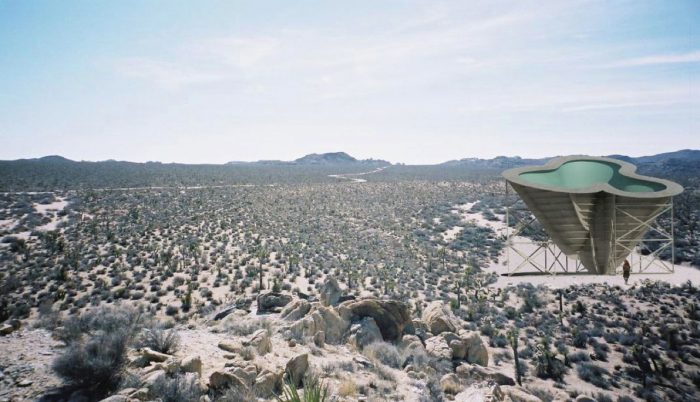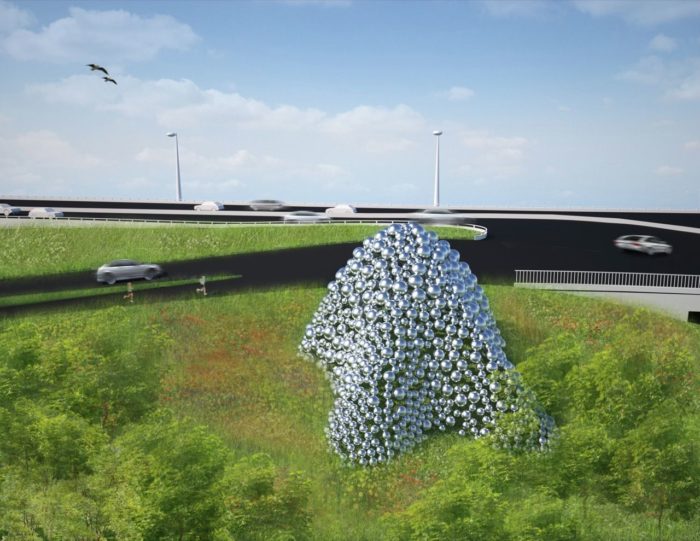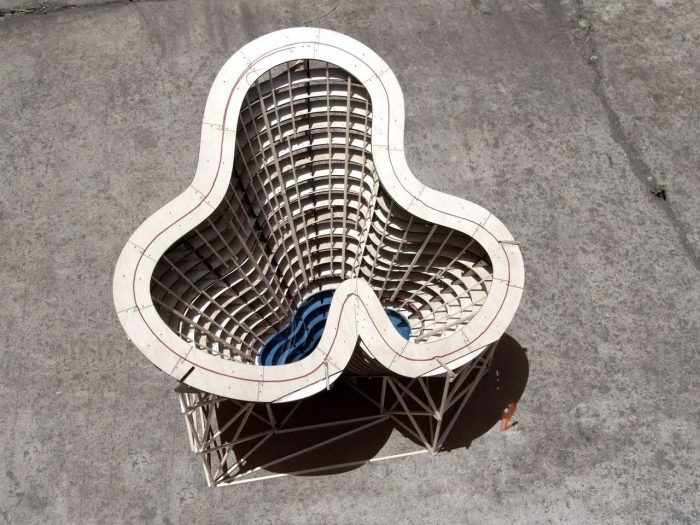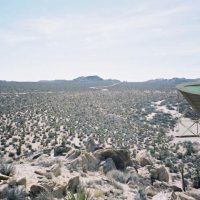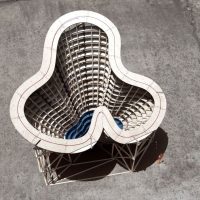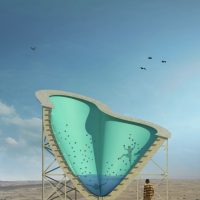‘Yucca Crater’ is a wooden structure located in a remote region near Joshua Tree National Park, in the Mojave Desert, US. It was created by Ball-Nogues Studio for High Desert Test Sites (HDTS) – a non-profit organization supporting experimental projects and collaboration between artists. Keeping with the principles of the organisation, ‘Yucca Crater’ has no owner and was abandoned after its inauguration at the HDTS annual art festival (October 15th & 16th, 2011). The 30-feet tall structure (from rim to low point) is pressed 10 feet into the ground and works as a pool and climbing wall for participating artists and desert travelers.
As the name suggests, the project is a critical response to the land-use management, reminding of “the abandoned suburban swimming pools and ramshackle homestead dwellings scattered across the Mojave“, the practice states. It also encourages recycling – both physically and creatively. The wooden structure was previously the formwork used for ‘Talus Dome’, a landscape sculpture consisting of more than 900 boulder-sized metal spheres ‘assembled to appear as a monumental pile of gravel‘, as the studio mentions. “The two projects were ‘cross-designed’ such that the method of production used in the first (Talus Dome) has become the central aesthetic for the second (Yucca Crater)”, they add.
The (re)construction of ‘Yucca Crater’ is the work of a team effort, completed with the support of United States Artists Projects. After being used at a social event, its uncertain destiny is left to entropic forces of the landscape – a reflection of the new economical and geographical domains of the object. The project offers an example of how art can overcome waste-related problems by using by-products in a different context.
- Courtesy of Ball-Nogues Studio
- Courtesy of Ball-Nogues Studio
- Courtesy of Ball-Nogues Studio
- Courtesy of Ball-Nogues Studio


